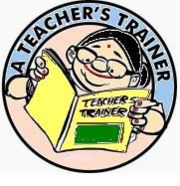SKILLS IN EFFECTIVE PRESENTATION
SKILLS IN EFFECTIVE PRESENTATION
There are two broad categories of skills one has to focus upon.The one which is well established and propounded is the classroom interaction skills. There is another set of skills focusing on cognative processes that undergo while interacting termed as cognative skills.Some of the important interaction skills are briefly outlined
Interaction skills
This refers to the ability on an individual to present his/her ideas, factual information, procedures etc. in simple language which is fluent and is systematically organized the skill of explanation involves the following.
a. Ability to organize the information, ideas and content in a sequential order that facilitates comprehension.
b. Ability to frame simple sentences using appropriate vocabulary
c. Ability to use discourse makers to show connection between ideas and facilitate comprehension. Makers could be words/phrases like, and therefore, however, because etc.,
The trainee’s voice is the most valuable asset while making a verbal presentation. The trainer should learn to sue the voice effectively so that it has tonal variations and is stimulating and pleasing to listen.
Good orators, actors, actresses and political personalities use this skill of voice (b) modulation very effectively, however, exaggeration of this skill can make the performance artificial. Voice modulation comprises.
a. Control of the volume of the sound b. Tone and pitch variation c. Effective use of the pause
This is basically the ability to select appropriate examples to communicate an idea or concept. It also involves the section of appropriate media to put across the example. The trainer should also know at what point of the presentation she/he should use the example. The Skill of using examples includes:
- Identifying concepts and ideas: their nature, scope and limitations.
- Selecting both negative and positive examples
- Selecting the right media to present the examples/s
- Identifying the point at which the example should be used.
![]() Skills of enhancing participation
Skills of enhancing participation
This skill basically refers to the ability to actively involve participants in the learning experience.
The main skills are
a) Judicious selection of questions and question types b) Selection of activities to promote involvement.
The human body can be used to communicate certain messages along with the verbal presentation. Effective use of body language can enhance the quality if an presentation. Body language includes the use of hands, body movement, face, posture and gestures.
You may like to view
The sequencing of ideas in a way appropriate to the presentation is important. The presentation mode could be expository, discovery, deductive or any other sequencing would depend on two factors:
- The goal to be achieved
- The type of content.
Cognitve Skills
The cognitive skills involved are undersatnding the type of content knoweledge to be learnt, its placement with rest in the concept map, the chrecteristics of the content to be transactede and selection of the examples are few important ones.
![]() Identification of type of content(concepts)
Identification of type of content(concepts)
![]() Identificatioin of charecterisitcs of content
Identificatioin of charecterisitcs of content
![]() Identification of noise in content
Identification of noise in content
![]() Identifying appropriate examplars for content charcters
Identifying appropriate examplars for content charcters
![]() Selection of sequencing methods
Selection of sequencing methods
Integration of skills
A trainer should have the skills necessary to integrate other forms of media like blackboards, charts, OHP, video/audio cassettes in his/her presentation. While using verbal skills keep the following points in mind.
Tips to follow
- Plan in advances what you want to say
- Use simple and clear language
- Have variety
- Use adequate examples and explanations
- Be clear about what you are saying
- Try to bring variety in the way you use your voice
- Use body language
- Use an interactive approach wherever possible
- Be democratic
- Avoid rigidity in exectuion
- Understand the learner and treat the content according to thier needs
EFFECTIVE NONVERBAL COMMUNICATION
Discussed in the following is an important aspect of presentation skills namely, nonverbal communication.
|
You are aware than much of our communication happens through non verbal means. If sometimes we use nonverbal communication to support verbal communication, on other times we do just the reverse. There are also instances when we use nonverbal communication for long duration of time. |
Useful Web linksGo through this wiki educator page for a detailed understanding of nonverbal communication http://en.wikipedia.org/wiki/Nonverbal_communication The following site provides you with some very interesting questions about nonverbal communication components and also the correct anseres to these questions. |
The following video clippings would provide you some illustrations and questions to reflect upon
|
A) Having gone through the article mentioned above, you may answer the following questions
B) Visit the following site and answer what are the six ways of improving your nonverbal communication? http://honolulu.hawaii.edu/intranet/committees/FacDevCom/guidebk/teachtip/commun-1.htm
|


